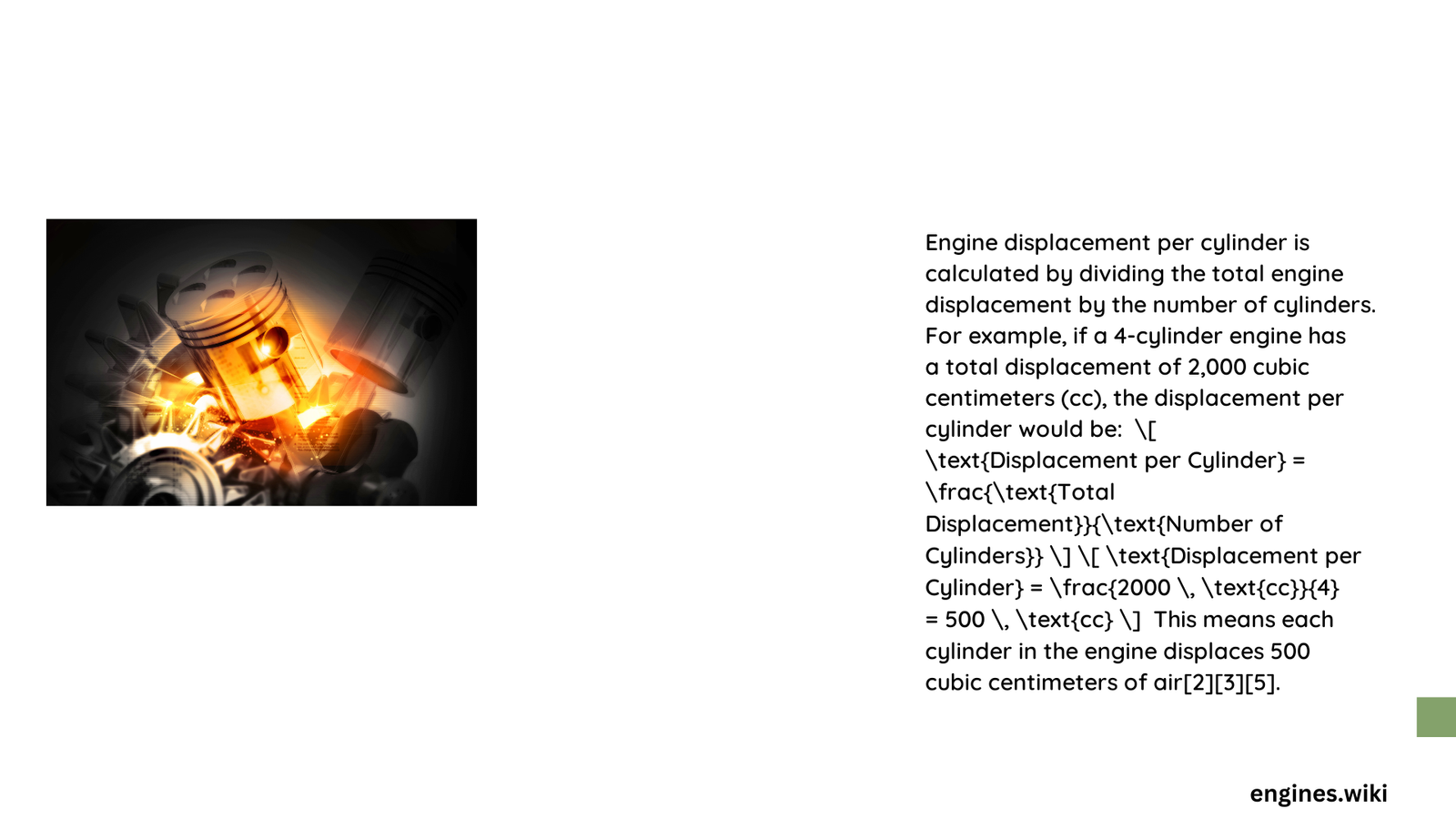Engine displacement per cylinder represents a critical metric in automotive engineering that quantifies the precise volume swept by a piston within a single cylinder during its complete travel from bottom dead center to top dead center. This fundamental measurement provides engineers and automotive professionals with essential insights into an engine’s potential power generation, efficiency characteristics, and overall mechanical performance.
What Is Engine Displacement per Cylinder?
Engine displacement per cylinder is a precise volumetric measurement representing the total space a piston occupies during its complete vertical movement within a single cylinder. This calculation involves multiple critical parameters that directly influence an engine’s fundamental mechanical capabilities.
How to Calculate Displacement per Cylinder?
The standard formula for calculating engine displacement per cylinder involves three primary variables:
[ \text{Displacement per Cylinder} = \pi / 4 \times \text{bore}^2 \times \text{stroke} ]
Key Calculation Components
| Parameter | Description | Impact on Displacement |
|---|---|---|
| Bore | Cylinder diameter | Directly affects cross-sectional area |
| Stroke | Piston travel length | Determines vertical volume |
| π/4 | Mathematical constant | Provides precise geometric calculation |
What Factors Influence Cylinder Displacement?
Several critical factors impact cylinder displacement:
- Geometric Dimensions
- Precise bore diameter
- Exact stroke length
-
Cylinder wall thickness
-
Material Considerations
- Thermal expansion properties
- Mechanical tolerances
-
Manufacturing precision
-
Performance Requirements
- Desired horsepower output
- Intended vehicle application
- Efficiency goals
Why Does Cylinder Displacement Matter?
Cylinder displacement directly correlates with several crucial engine performance characteristics:
- Power Generation: Larger displacements typically enable higher power output
- Fuel Efficiency: Smaller displacements often provide improved consumption rates
- Thermal Management: Displacement influences heat dissipation capabilities
What Are Practical Examples of Cylinder Displacement?
Performance Vehicle Scenarios
- Sports Car:
- Bore: 89 mm
- Stroke: 96 mm
-
Displacement: Approximately 595 cc per cylinder
-
Economy Vehicle:
- Bore: 75 mm
- Stroke: 84 mm
- Displacement: Approximately 372 cc per cylinder
Advanced Considerations
Modern engineering techniques like turbocharging and direct injection have significantly transformed traditional displacement understanding. These technologies enable smaller displacement engines to achieve performance levels previously associated with larger engine configurations.
Technical Nuances
- Volumetric Efficiency: Not all calculated displacement translates directly to power
- Combustion Chamber Design: Impacts actual usable displacement
- Compression Ratio: Influences energy extraction from available volume
Practical Implications

Understanding engine displacement per cylinder allows:
– Precise performance predictions
– Optimal engine design
– Enhanced engineering decision-making
Emerging Trends
- Increasing focus on compact, efficient designs
- Growing importance of computational modeling
- Integration of electrification technologies
Final Technical Perspective
Engine displacement per cylinder remains a fundamental metric, bridging theoretical calculations with practical mechanical performance. While technological advancements continue evolving, the core principles of volumetric measurement persist as a critical engineering foundation.
